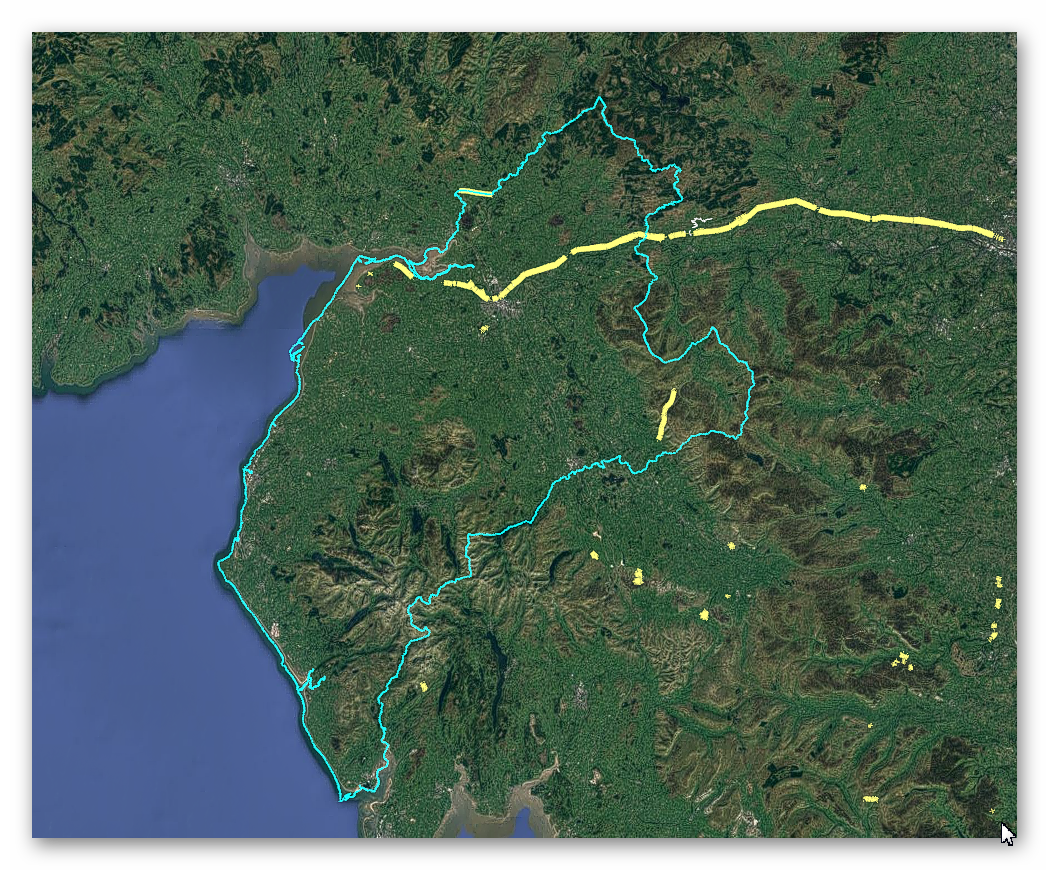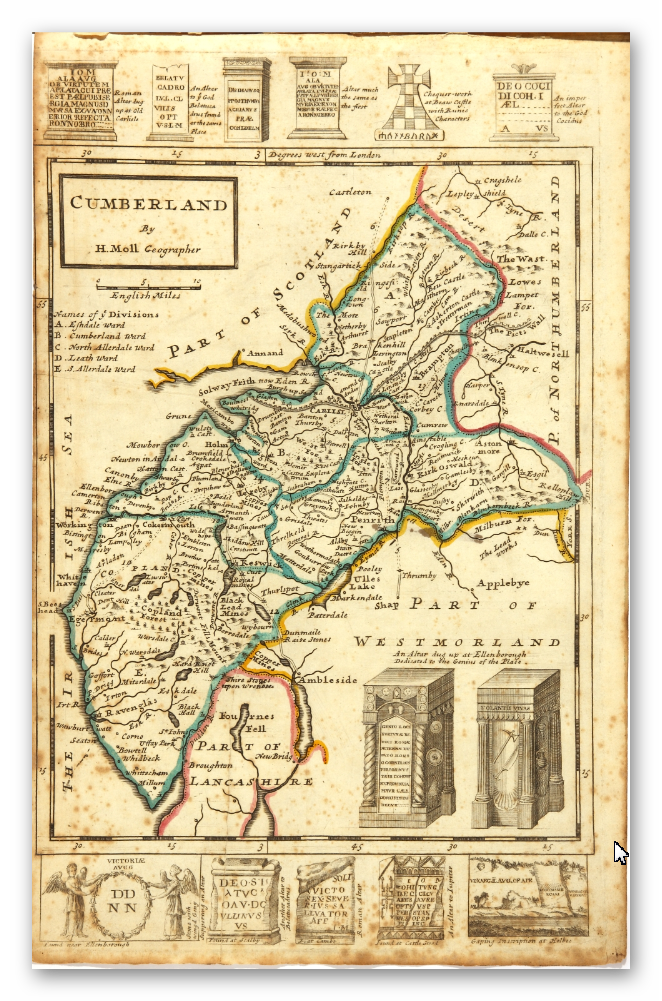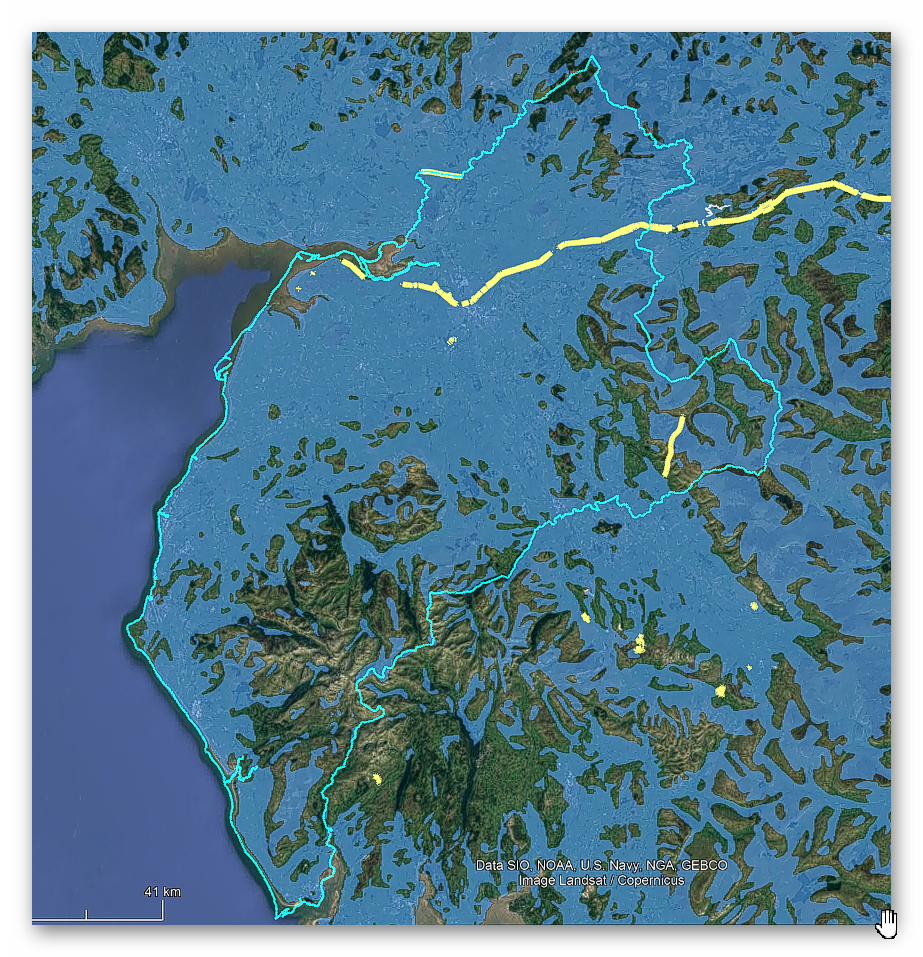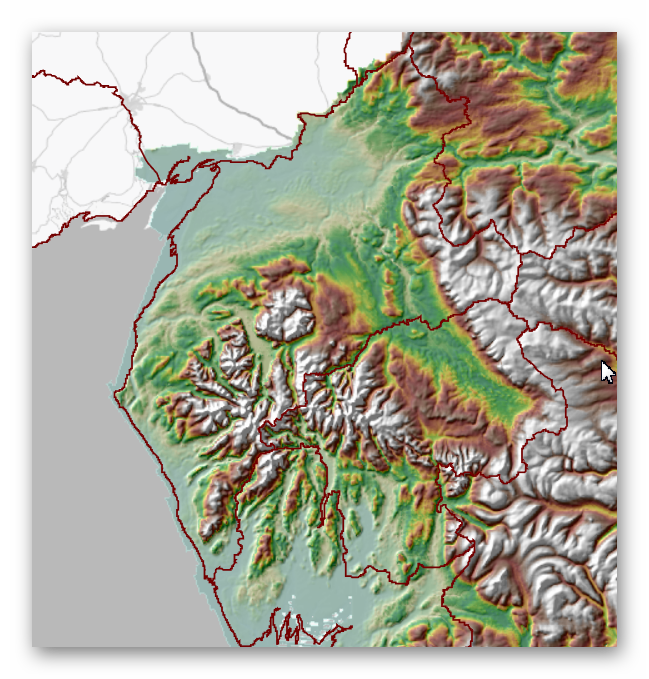Prehistoric Cumbria Canals (Dykes)
GE Map of Prehistoric Cumbria Canals (Dykes)

Old Map

Geological Landscape

Landscape/Terrain

Database of DYKES (Linear Earthworks) in Cumbria
(Click the ‘HE Entry Ref: Number’ (if blue) for more details and Maps)
| Name | HE Entry Ref: | NGF | Length (m) | Overall Width (m) | Ditch Width (m) | Bank Width (m) |
|---|---|---|---|---|---|---|
| Bishop's Dyke | 1007136 | NY 37305 51881 | 881 | 15 | 8 | 7 |
| Dike, circles and cairns on Bleaberry Haws | 1007212 | SD 26727 95010 | ||||
| Dykes and mounds on either side of Scandal Beck | 1007231 | NY 71566 05116 | ||||
| Dykes and mounds on either side of Scandal Beck | 1007231 | NY 71761 05563 | ||||
| Dykes and mounds on either side of Scandal Beck | 1007231 | NY 72105 05601 | ||||
| Medieval dyke: part of deer park boundary west of Cow Green | 1007594 | NY 61505 12023 | ||||
| Medieval dyke: part of deer park boundary on Hazel Moor and two medieval shielings | 1007597 | NY 61356 10772 | ||||
| Medieval dyke: part of deer park boundary north of Cow Green | 1007606 | NY 61501 12514 | ||||
| Hadrian's Wall and vallum between Baron's Dike and Birky Lane at Walby, in wall miles 60, 61 and 62. | 1010979 | NY 44952 60674 | ||||
| Hadrian's Wall and vallum between Birky Lane at Walby and the east side of the M6 in wall miles 62 and 63 | 1010980 | NY 42812 59342 | ||||
| The vallum between the road to Garthside and the track east of Castlesteads in wall miles 54, 55 and 56 | 1010983 | NY 52861 64215 | ||||
| The vallum between the field boundary south east of Heads Wood and the A6071 road in wall mile 57 | 1010987 | NY 50292 62915 | ||||
| Hadrian's Wall and vallum from A6071 to The Cottage in the case of the Wall, and to the road to Oldwall, for the vallum, in wall miles 57, 58 and 59 | 1010988 | NY 49074 61908 | 2,554 | 36 | 10 | 13 |
| Baron's Dike (missing) | 1010990 | NY 46262 60837 | 1,868 | 36 | 10 | 13 x 2 |
| The vallum between the road to Laversdale at Oldwall and Baron's Dike in wall miles 59 and 60 | 1010990 | NY 47083 61223 | ||||
| Hadrian's Wall and vallum between the field boundaries east of milecastle 50 and the boundary west of Coombe Crag in wall miles 50 and 51 | 1010995 | NY 59994 65715 | ||||
| Hadrian's Wall and vallum between the field boundary west of Coombe Crag and Banks Green Cottage and the road to Lanercost at Banks in wall miles 51 and 52 | 1010996 | NY 57868 64862 | ||||
| Hadrian's Wall and vallum between Banks Green Cottage and the road to Lanercost at Banks and the road to Garthside in wall miles 52, 53 and 54 | 1010997 | NY 55485 64413 | ||||
| Medieval dyke system and shieling west of Shap Abbey | 1011638 | NY 54299 15080 | ||||
| Hadrian's Wall vallum between the dismantled railway north of Knockupworth Cottage and the dismantled railway south of Boomby Gill in wall mile 67 | 1014692 | NY 37018 56999 | ||||
| Hadrian's Wall vallum between the dismantled railway south of Boomby Gill and the field boundary south east of Mill Beck in wall mile 68 | 1014693 | NY 36491 57471 | ||||
| Hadrian's Wall vallum between Mill Beck and the field boundary east of Kirkandrews Farm in wall mile 69 | 1014695 | NY 35691 58186 | 570 | 36 | 10 | 13 x 2 |
| Hadrian's Wall vallum between the dismantled railway west of Kirkandrews Farm and the dismantled railway south east of Burgh by Sands in wall miles 70 and 71 | 1014697 | NY 34087 58706 | ||||
| Hadrian's Wall vallum between the watercourse 400m south east of Glasson and the access road to Glendale caravan park in wall miles 76 and 77 | 1014700 | NY 25183 60654 | ||||
| Hadrian's Wall and vallum between the access road to Glendale caravan park and the track south of Kirkland House in wall miles 77 and 78 | 1014701 | NY 24447 61426 | ||||
| Hadrian's Wall vallum between the track south of Kirkland House and Bowness-on-Solway in wall miles 78 and 79 | 1016021 | NY 23607 62026 | ||||
| Scots' Dike | 1016860 | NY 36136 73566 | 5,583 | 43 | 6 x 2 | 31 |
| Hadrian's Wall vallum between the M6 motorway and Drawdykes Castle in wall mile 64 | 1017943 | NY 41939 58608 | ||||
| Hadrian's Wall vallum between Drawdykes Castle and Whiteclosegate in wall mile 64 | 1017944 | NY 41568 58297 | ||||
| Hadrian's Wall vallum between the boundaries north of the properties on Whiteclosegate and the field boundary west of Wall Knowe in wall miles 64 and 65 | 1017947 | NY 40837 57676 | ||||
| Waitby Castle enclosed Romano-British settlement and part of a medieval dyke | 1018063 | NY 75692 08321 | ||||
| Hadrian's Wall Vallum between West End, Burgh by Sands and the eastern boundary of Dykesfield | 1018308 | NY3148759090 | ||||
| Hadrian's Wall between the east end of Davidson's Banks and road to Grinsdale and vallum between Davidson's Banks and dismantled railway in wall miles 67 and 68 | 1018309 | NY 37412 56694 | ||||
| Hadrian's Wall vallum between east side of road at Burgh Head, and boundary south of Ash Tree Square, Burgh-by-Sands in wall miles 71 and 72 | 1018458 | NY 32529 59025 | ||||
| Eastfield Sike medieval moated site, associated fishpond, and medieval woodland boundary banks and ditches at Burtergill Wood and Kiln Hill | 1018598 | NY 76413 16327 |
Dykes Ditches and Earthworks
Indeed, the modern term “dyke” or “dijk” can be traced back to its Dutch origins. As early as the 12th century, the construction of Dykes in the Netherlands was a well-established practice. One remarkable example of their ingenuity is the Westfriese Omringdijk, stretching an impressive 126 kilometres (78 miles), completed by 1250. This Dyke was formed by connecting existing older ‘dykes’, showcasing the Dutch mastery in managing their aquatic landscape.
The Roman chronicler Tacitus even provides an intriguing historical account of the Batavi, a rebellious people who employed a unique defence strategy during the year AD 70. They punctured the Dykes daringly, deliberately flooding their land to thwart their enemies and secure their retreat. This historical incident highlights the vital role Dykes played in the region’s warfare and water management.
Originally, the word “dijk” encompassed both the trench and the bank, signifying a comprehensive understanding of the Dyke’s dual nature – as both a protective barrier and a channel for water control. This multifaceted concept reflects the profound connection between the Dutch people and their battle against the ever-shifting waters that sought to reclaim their land.
The term “dyke” evolved as time passed, and its usage spread beyond the Dutch borders. Today, it represents not only a symbol of the Netherlands’ engineering prowess but also a universal symbol of human determination in the face of the relentless forces of nature. The legacy of these ancient Dykes lives on, a testament to the resilience and innovation of those who shaped the landscape to withstand the unyielding currents of time.
Upon studying archaeology, whether at university or examining detailed ordinance survey maps, one cannot help but encounter peculiar earthworks scattered across the British hillsides. Astonishingly, these enigmatic features often lack a rational explanation for their presence and purpose. Strangely enough, these features are frequently disregarded in academic circles, brushed aside, or provided with flimsy excuses for their existence. The truth is, these earthworks defy comprehension unless we consider overlooked factors at play.
One curious observation revolves around the term “Dyke,” inherently linked to water. It seems rather peculiar to apply such a word to an earthwork atop a hill unless an ancestral history has imparted its actual function through the ages. Let us consider the celebrated “Offa’s Dyke,” renowned for its massive linear structure, meandering along some of the present boundaries between England and Wales. This impressive feat stands as a testament to the past, seemingly demarcating the realms of the Anglian kingdom of Mercia and the Welsh kingdom of Powys during the 8th century.
However, delving further into the evidence and historical accounts challenges this seemingly straightforward explanation. Roman historian Eutropius, in his work “Historiae Romanae Breviarium”, penned around 369 AD, mentions a grand undertaking by Septimius Severus, the Roman Emperor, from 193 AD to 211 AD. In his pursuit of fortifying the conquered British provinces, Severus constructed a formidable wall stretching 133 miles from coast to coast.
Yet, intriguingly, none of the known Roman defences match this precise length. Hadrian’s Wall, renowned for its defensive prowess, spans a mere 70 miles. Could Eutropius have referred to Offa’s Dyke, which bears remarkable similarity to the Roman practice of initially erecting banks and ditches for defence?
For more information click HERE
Further Reading
For information about British Prehistory, visit www.prehistoric-britain.co.uk for the most extensive archaeology blogs and investigations collection, including modern LiDAR reports. This site also includes extracts and articles from the Robert John Langdon Trilogy about Britain in the Prehistoric period, including titles such as The Stonehenge Enigma, Dawn of the Lost Civilisation and the ultimate proof of Post Glacial Flooding and the landscape we see today.
Robert John Langdon has also created a YouTube web channel with over 100 investigations and video documentaries to support his classic trilogy (Prehistoric Britain). He has also released a collection of strange coincidences that he calls ‘13 Things that Don’t Make Sense in History’ and his recent discovery of a lost Stone Avenue at Avebury in Wiltshire called ‘Silbury Avenue – the Lost Stone Avenue’.
Langdon has also produced a series of ‘shorts’, which are extracts from his main body of books:
For active discussions on the findings of the TRILOGY and recent LiDAR investigations that are published on our WEBSITE, you can join our and leave a message or join the debate on our Facebook Group.
